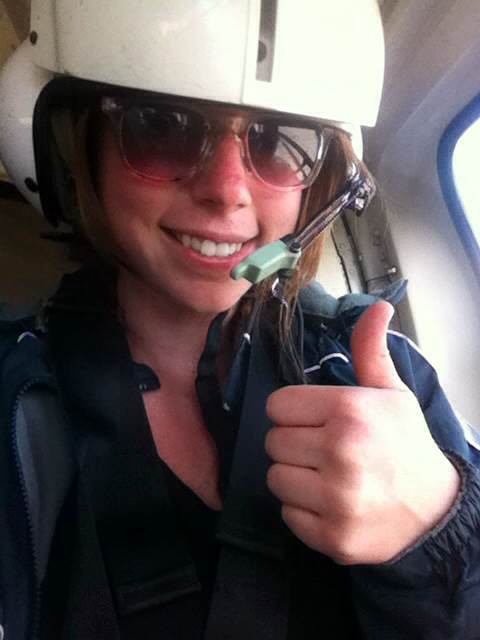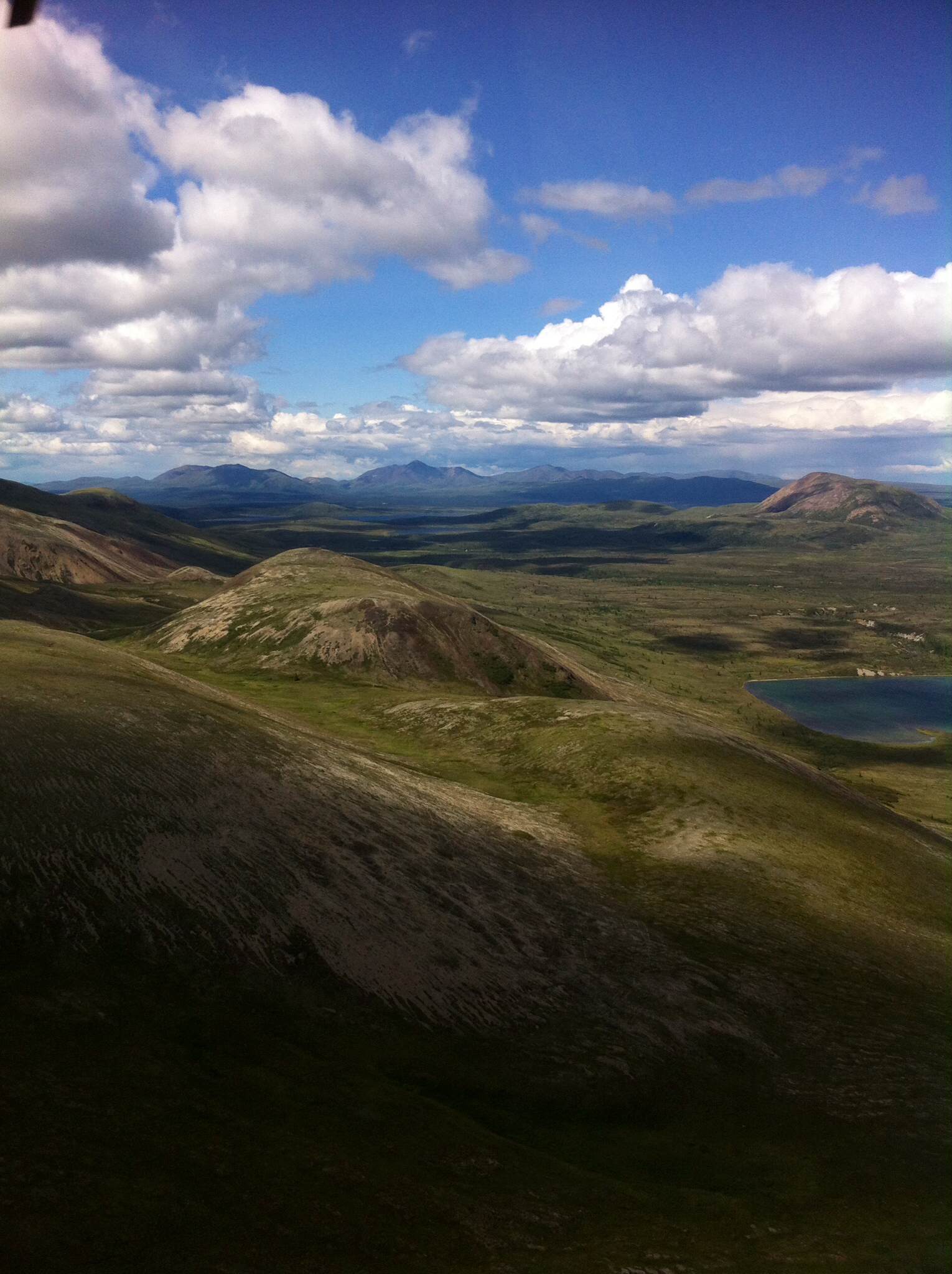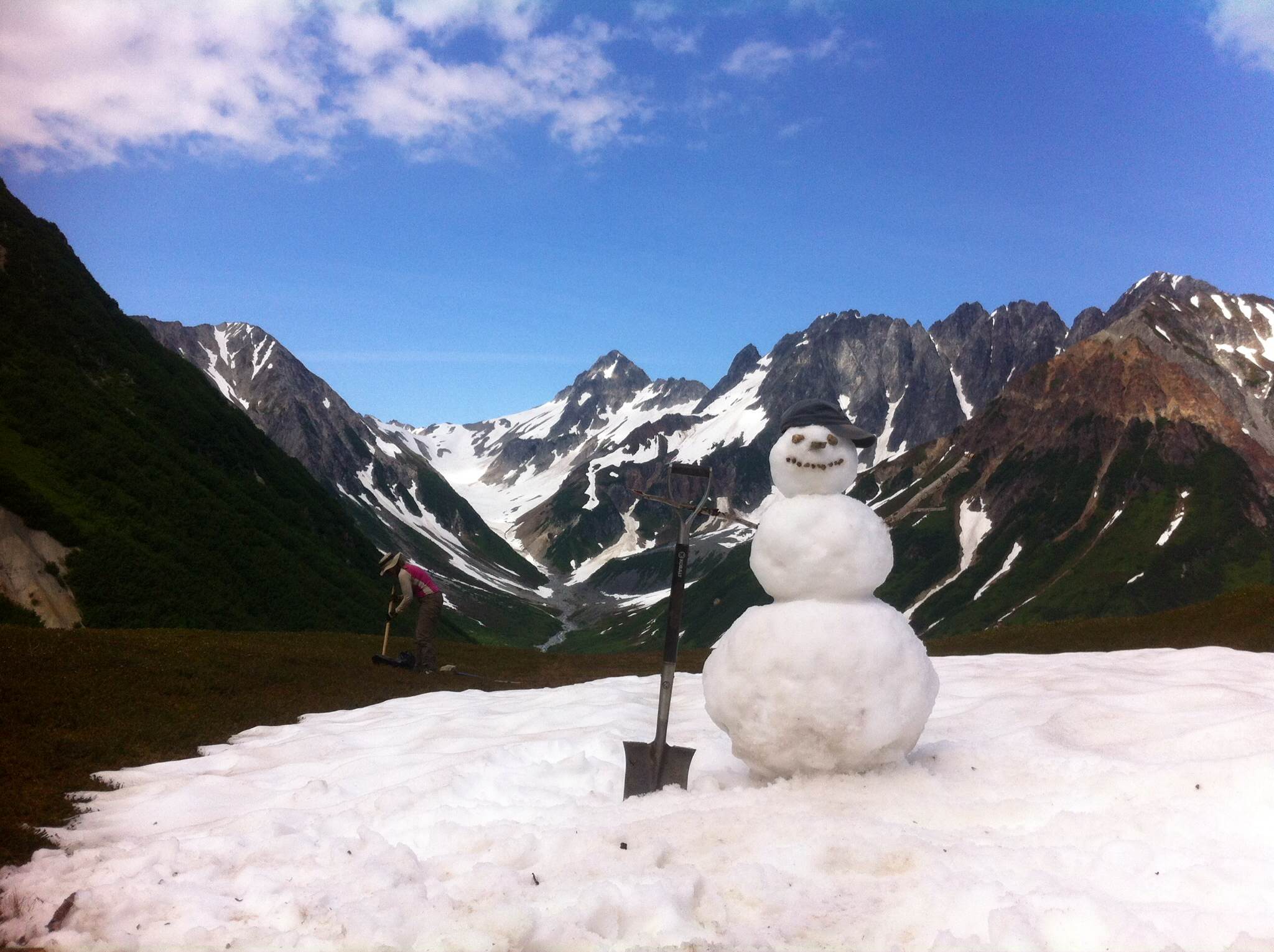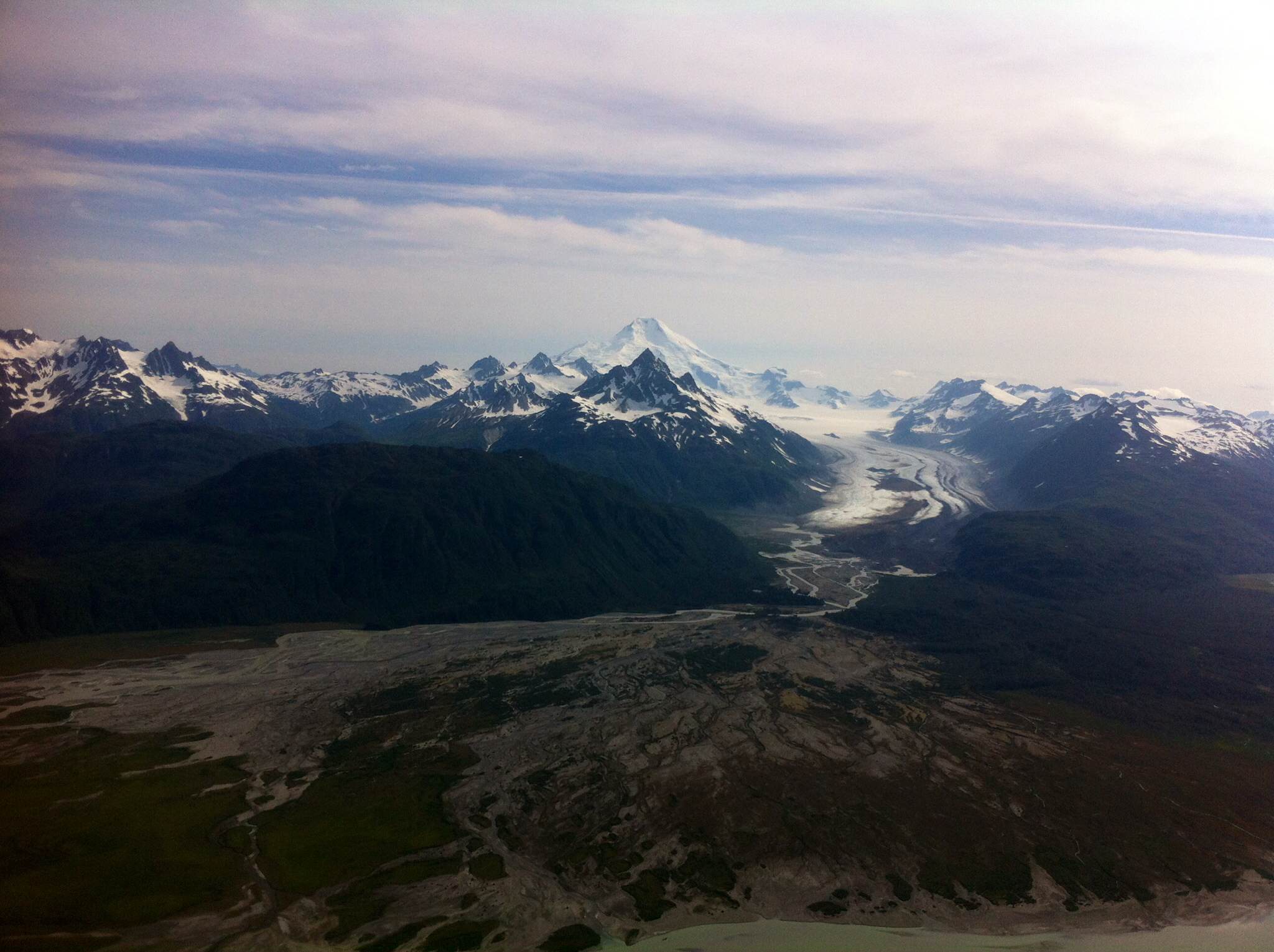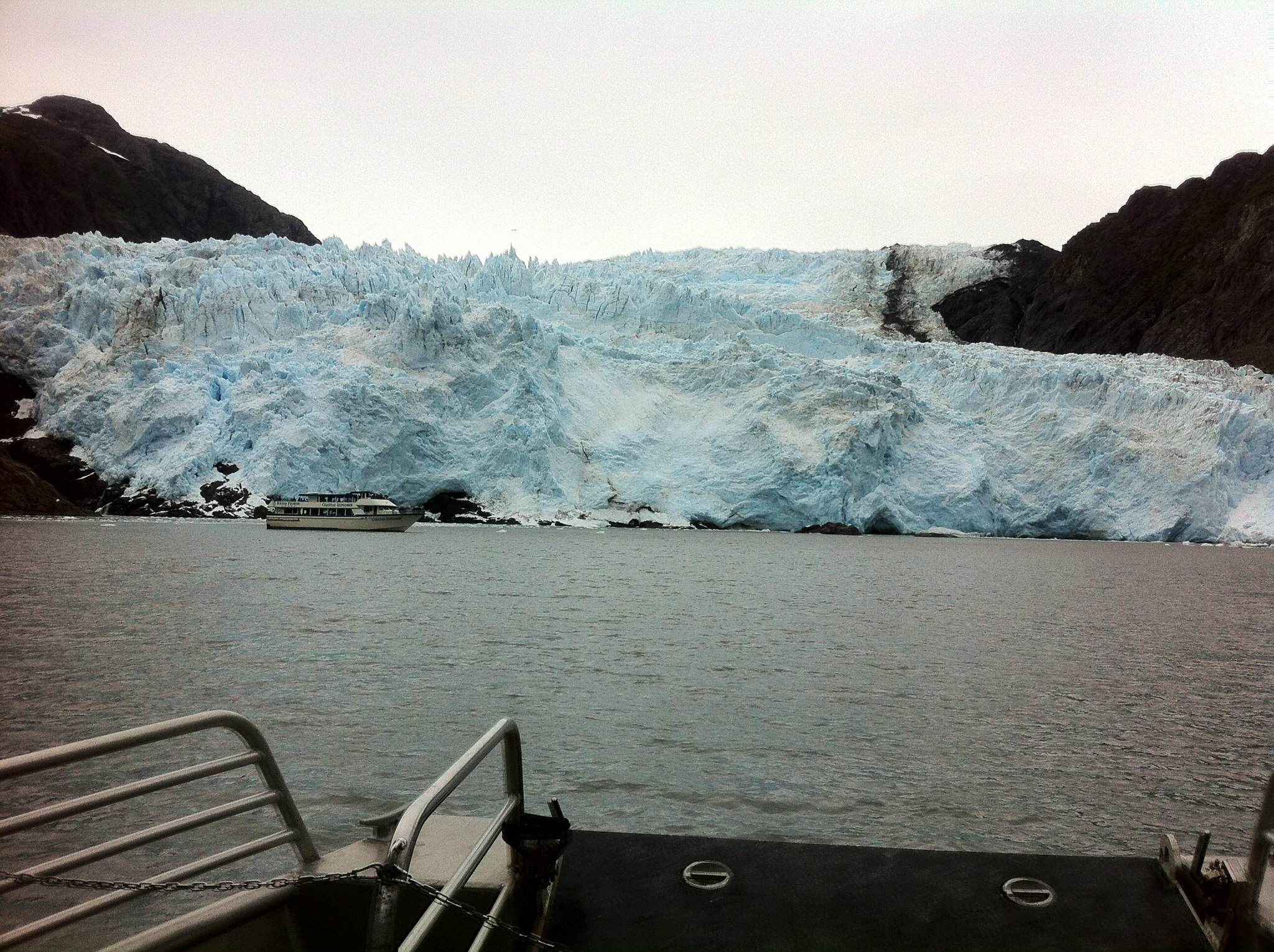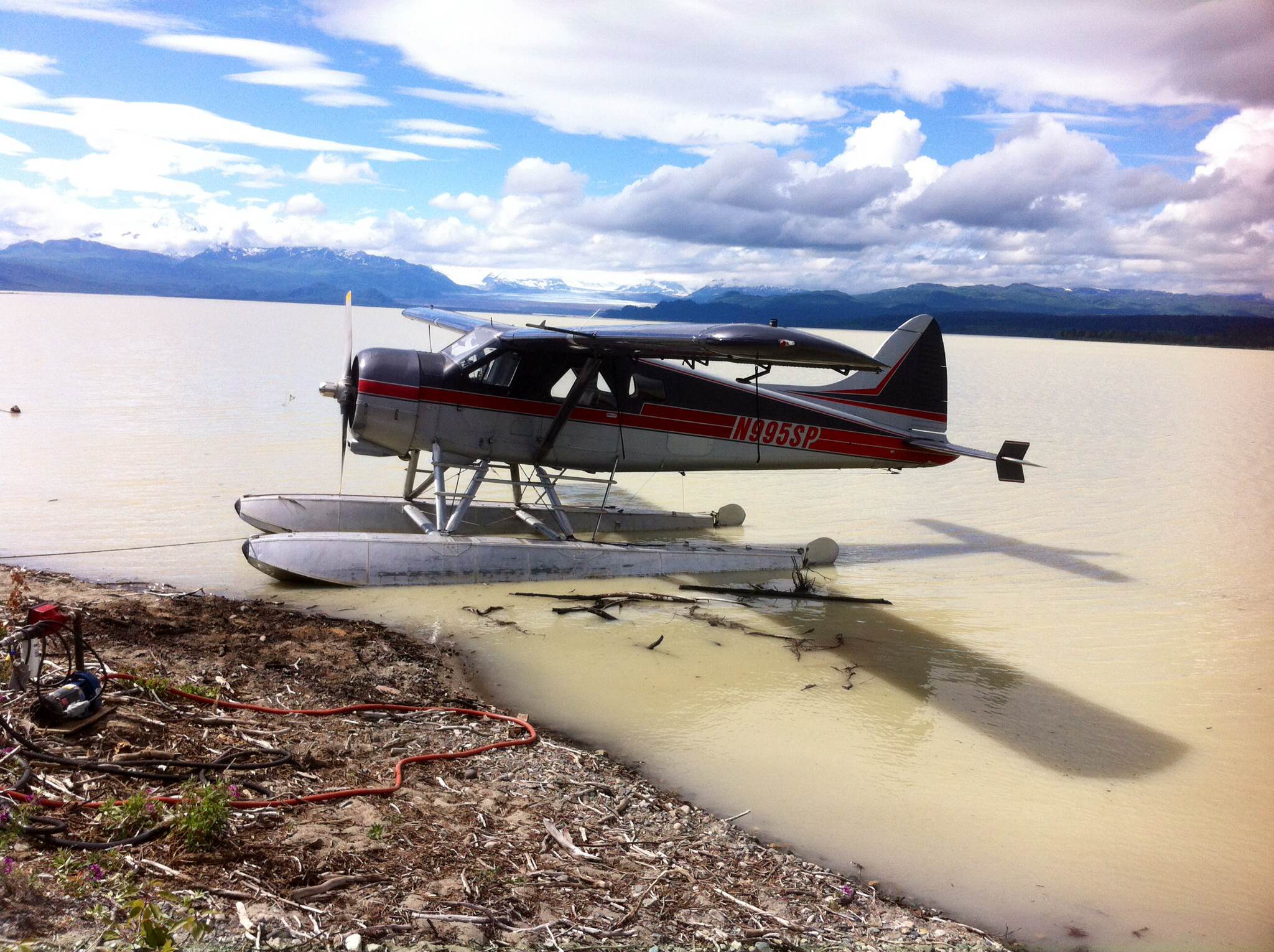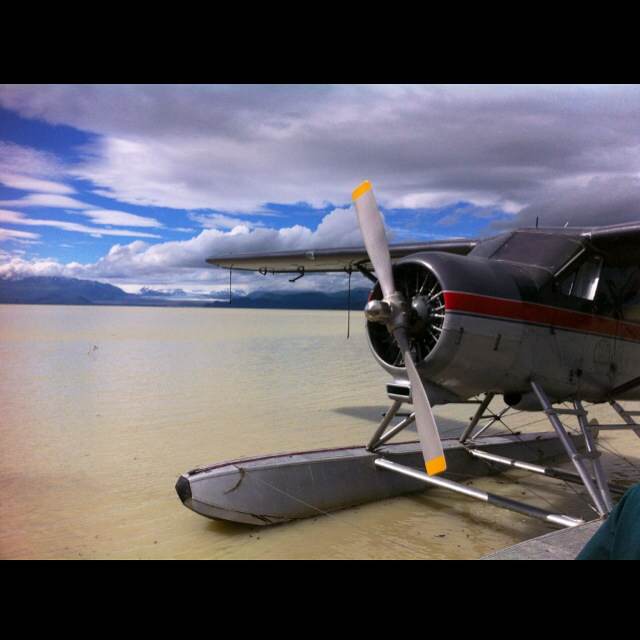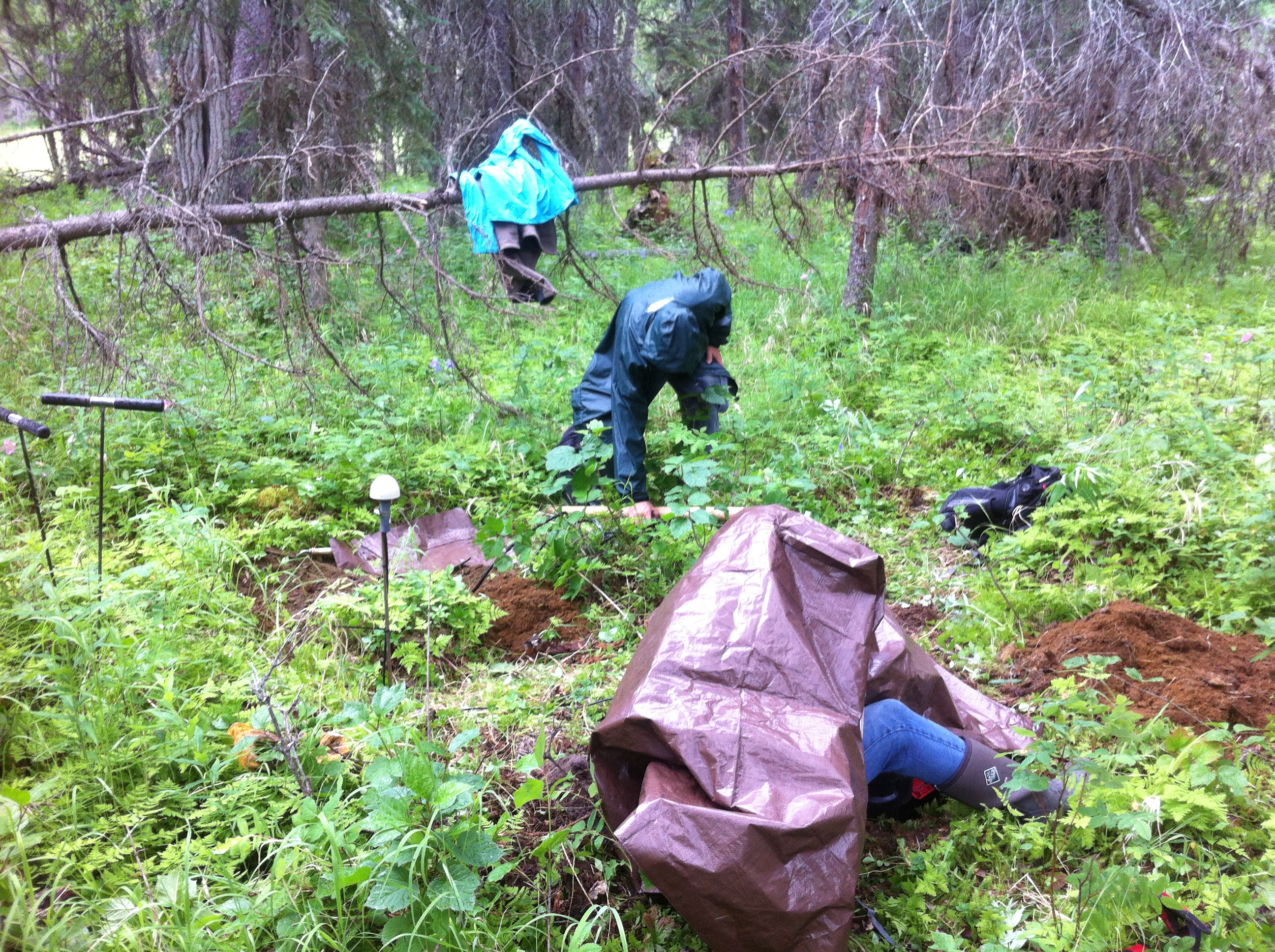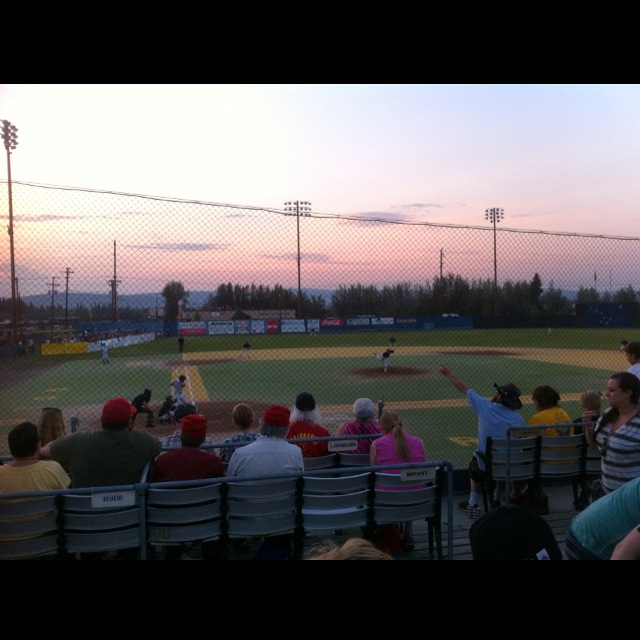Nealey Sims

Nealey Sims is a student at University of North Alabama currently completing her research at University of Alaska, Fairbanks under Dr. Doug Christensen.
We will be deploying a 29- element seismic network around the Cook Inlet and across Mt. Redoubt volcano in order to understand the seismic response of the deep Cook Inlet basin, and the extension of the slab under Mt. Redoubt. This data will not be available for study until next year, however, so the research aspect of this project will be using data previously gathered from a deployment at Uturuncu volcano. Though the volcano is inactive, it is currently inflating at a high rate. This project aims to understand how and where this inflation is taking place. We will be investigating the shear wave splitting properties to understand the anisotropy and flow of the upper mantle, Nazca slab, and thick continental crust below the volcano.
Saved the Best For Last
July 23rd, 2015
Hi all,
So, this past week, I have been literally out of touch. We traveled to a small town (community maybe? or village? 'town' feels like an exageration) Port Alsworth, population: ~300. This place was quite remote- so much so that the main way to travel to and from is flying. I also had zero phone service for the week and very limited internet. It was actually kind of nice being out of touch with the real world for a while-- makes you really appreciate the nature around you. It's also situated in mountains so man is it beautiful.
Our goal was to use Port Alsworth as base camp for a week while we took a helicopter out to install seismic stations in a line going from roughly 80 km northwest of Port Alsworth to just east of Redoubt volcano. That's right, I got to ride in a helicopter for six days and see Redoubt volcano up close and personal! Easily the best fieldwork trip of the entire summer. Of course, I have pictures:
I didn't realize how loud helicopters were until I had to stand right next to one and unload gear while it was still running. No wonder we wear these Star Wars looking helmets!
I can't explain how exhilarating it is to fly through mountians and over snow capped ridges and glaciers. Truly an amazing experience.
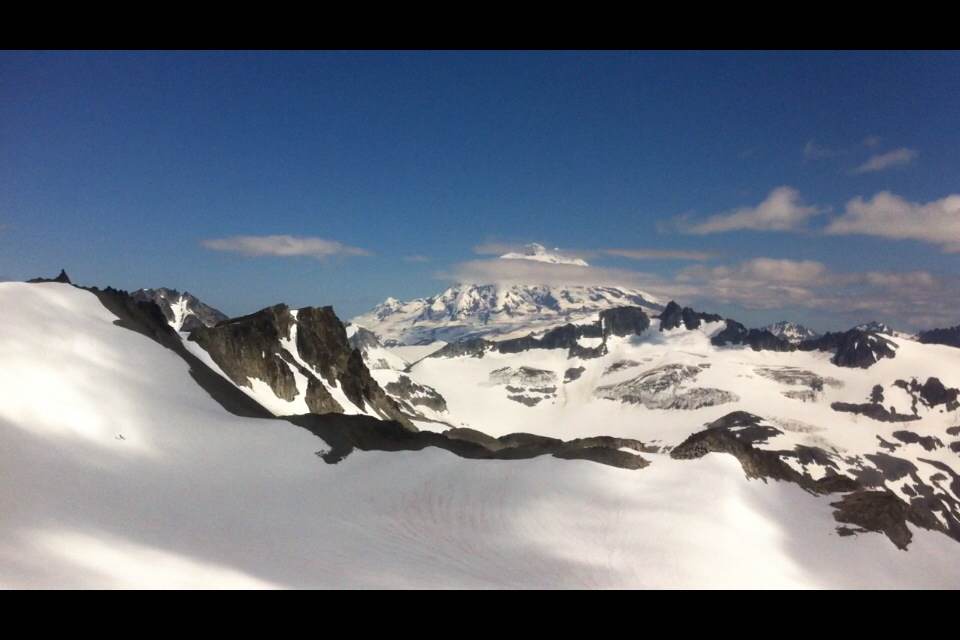
Redoubt volcano!! We even flew right up to the side and I could see steam coming from the top. My favorite flight by a longshot.
The "scarebear" as Doug put it (as opposed to "scarecrow") that I built to protect our station close to Redoubt. He was pretty chill.
This was on my very last flight. My last station install of the summer. This is Mt. Iliamna, the volcano next in line to Redoubt. I will definitely never forget this amazing experience and I hope I will have more in the future.
This internship has given me some of the most exciting moments of my entire life. Before this summer, I had never even been on a plane, now I've been in large planes, small planes, float planes, helicopters, and boats of varying size. I am so very grateful for such an amazing opportunity to get out and work in such a beautiful state. I have learned so much this summer, as well. I am confident I could even install a seismic station by myself! (I've had plenty of practice in field work this summer, that's for sure.)
I've also gained much experience in the computational side of research. Before this summer, I had never even tried to write code or a program or work with something like Matlab. Now, I feel more confident than ever (though, I know I have A LOT to learn, still) working in this environment. As you guys know, the computational side and the field work side of my research this summer do not exactly go together. In the field, I have been assisting in the setup of the SALMON seismic network in Alaska but on the computer, I am working with data from Uturuncu volcano (PLUTONS seismic network). The summer started off a bit rocky but things are finally coming together and I am getting much better at working with Splitlab. I feel like every time I get through the data set, I find some more useful information about how to filter or which method works best for certain backazimuths that I end up going back through and making more improvements. There's always more to learn and room for improvement, I've noticed.
So, here's a glimpse into what I have been working on this summer (still always a work in progress, of course):
.png)
A map of the seismic stations set up around Uturuncu volcano in Bolivia (the volcano is located under the station in the center, PLCM). The red lines represent the fast-polarization directions determined from the shear wave splitting results gathered using the sofware Splitlab. Fast-polarization directions is just a fancy term meaning the direction of flow or the direction in the material that the crystals are oriented. In this case, we are seeing the anisotropy in the mantle wedge that is above the subducting Nazca plate. The length of the red lines is determined by the delay times of the waves traveling through the medium.
Some of the lines you see may actually be Null or poor by the time this ends up on a poster as I have just recently discovered better ways to classify some of my results (There's that always learning something new theme again). But for the most part, this gives a fairly consistent fast direction, especially considering how regionally different the the results seem to be along the Altiplano plateau and subducting Nazca plate. All in all, I am quite satisfied where things are going with my research.
Well, I think I have babbled on enough for now. I only have a week left here in Alaska so I think I better get to work! So much to do in so little time. Hope you all are enjoying your summer and I look forward to all you guy's awesome posters at AGU.
Til next time,
NealeyS
Glaciers, Planes, and Posters
July 12th, 2015
Hi all,
Well, these past couple of weeks for me have been absolutely amazing! Fieldwork is definitely difficult but being in beautiful Alaskan outdoors makes it all worth it. I have had more firsts! We got to go out on a boat out of Seward to install a station near a glacier-- A GLACIER, guys. It was absolutely beautiful and so massive that I couldn't even fit it in one picture:
(fairly large tourist boat for scale)
As we came up to it, a large piece of it fell off into the water. (I think this is known as 'calving') Also, as we were installing the seismic station nearby, we kept hearing a noise that sounded like rumbling thunder. Turns out, it was the glacier! Giant, calving, moving ice. Absolutely amazing to witness.
The trip out to it also brought many fun sites-- I saw puffins, whales, porpoise, and even sea lions sun bathing!
Aren't they cute? It really was an amazing ride out to the install site, I must say.
Then, the beach we had to land on to install the station also had a black bear laying on it. It even started walking toward the boat as we were landing so the captain had to blow the horn to scare it away-- right into the woods where we had to go install. Personally, I found all of this exciting but my mentor is not a fan of bears being so close to us so he was less than thrilled by the sighting.
Next install? Float plane! Guys, if you ever get the chance to ride in a float plane, I HIGHLY recommend it. It was so smooth, I could not even tell when we took off or landed.
This plane was built in 1956 and undergoes refurbishing every few years. Isn't she a beauty?
We were so close to the ground the entire time and I saw more moose than I have the entire rest of the trip. I even spotted another bear! (I was convinced it was a brown bear due to its size and not black color but my fellow passengers were not positive which it was.)
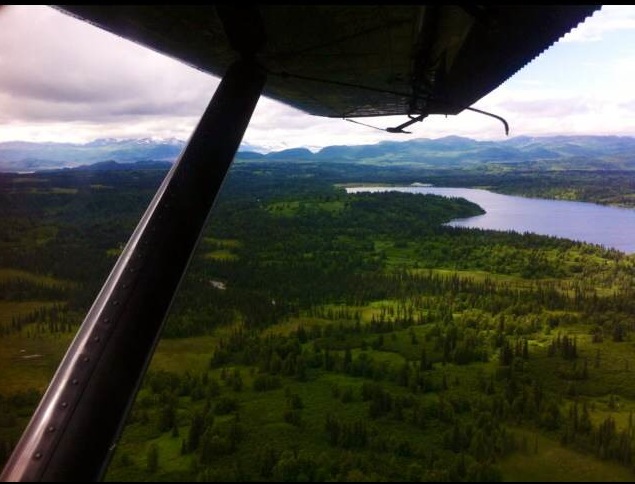
It's really tough to beat the picturesque scenery of Alaska, I gotta say.
Well, there are some of my highlights from the last couple of weeks. Starting tomorrow, my mentor and I are heading out into the field yet again. This time, we're going down to Port Alsworth around Lake Clark. Apparently, 'remote' is a good description of this place. Doug even tells me that I might not even have cell phone service. How exciting! But the even more exciting news?? I'll get to ride in my first helicopter! For a little over a week we will be installing stations by helicopter around Lake Clark and Redoubt volcano. Every trip into the field, I get to do something new-- I just can't wait! Even my mentor, Doug, who has lived in Alaska for 30 years or so has never been to this place-- or in a large helicopter-- or in a float plane. I think he's having just as much fun as I am. I'll definitely keep you guys posted, though.
As for my research portion of the summer? It's great! The results are coming along and we are able to 'build a nice story with them' as Doug often says. He always says that you should work toward being able to tell a story with your data-- seriously, every time I tell him some results he says, "Good, it sounds like we can make a story out of all of this. I think we can get a good story." I've already started writing my abstract and hope to have it done by the end of the next week or so. Doug and I have even started discussing the poster and I have already picked some figures that I will be including. (not all, yet, because there is still work to be done, of course!)
As a rough outline, I can tell you what will be on it. (I don't have the means to put something together just yet due to some technical difficulties.)
At the top will be my title along with the UAF, NSF, and UNA symbols. The poster is essentionally organized into three collumns:
In the left hand collumn will be my abstract followed by the maps I've made using GMT of the Uturuncu area and the station locations. Perhaps even a photo of the volcano and a desciption of the area.
In the middle collumn, I will have images from Splitlab, the program I am using to do the SKS splitting. This collumn will discuss my methods and some of the results. I am using two different methods so I will be sure to explain here their differences, why I used them, and how the results of both match up. I think this collumn will also contain a map showing the general fast direction trend I determined from the splitting measurements.
The final collumn will contain the rest of my results, my conclusions, acknowledgements and references.
This is of course a rough rough outline and my mentor has shown me other posters done by himself and previous interns that I feel will be nice beginning templates as well.
Hopefully I can get an image of my outline up soon for you guys to get a better picture.
Well, I think that's about all I have for now.
Tune in next time for more photos of beautiful Alaskan wilderness, helicopters and more!
Til then have a lovely week,
Nealey
4th and Field work!
July 4th, 2015
Hi all,
Happy 4th of July!!! I hope everyone had a lovely day!
As for me, science stops for no one! (Or no holiday, either) This past week has started up my field work again here in Alaska and what a wonderful week it has been. We've been from Fairbanks to Seward to Kenai and we'll soon be in Anchorage where we will be flying in a float plane. So many new experiences I am having! Today we installed a station in the rain and if any of you have ever used a Clie (A palm computer used with the Q330 and Baler) you know it's not supposed to get even a drop of water on it.
Our solution?
I know, I know don't I look great? The good thing about that tarp, though, was that it kept out so many mosquitos (a major annoying problem here in Alaska). In rain or sunshine, this summer fieldwork has been some of the most fun I've ever had. On top of all the fun of installing these stations, Alsaka is just absolutely beautiful. We get to set up in such remote spots that it's hard to find a place that isn't gorgeous.
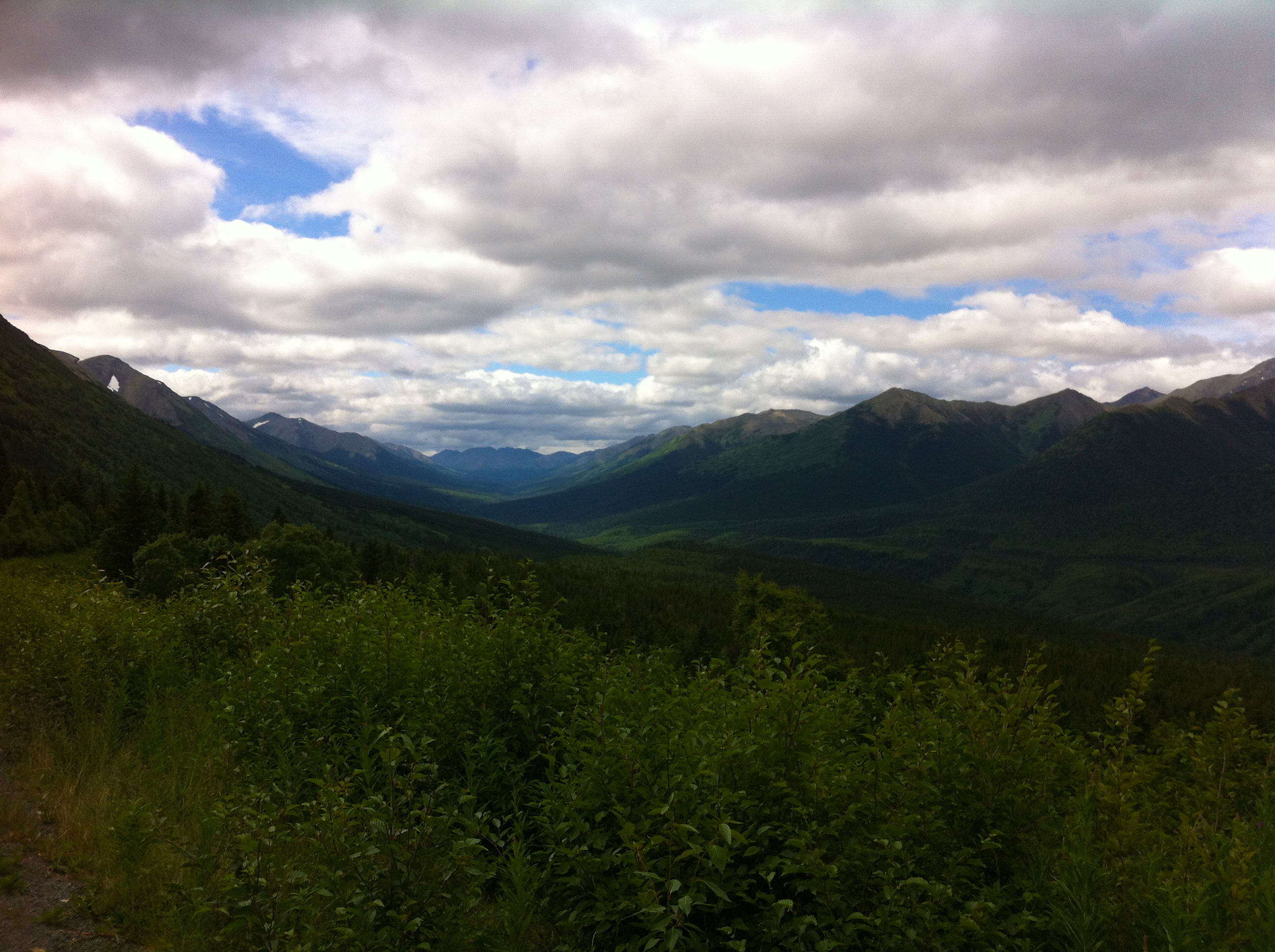
I may cut this blog short, unfortunately. We are still out in the field and the internet here at the house we're renting isn't always the fastest or most reliable.
Hope you guys have a wonderful 4th of July and a great week!
Til next time,
Nealey S
The Ups and Downs
June 23rd, 2015
Hi all,
Okay, first things first: the Midnight Sun baseball game was a blast!
That photo was taken at midnight and it actually appears darker than it really was. The Alaska Goldpanners won the game 7-4 and it ended around 1:30AM. It was still pretty light outside even then and the sun started to come up around 2AM. Crazy days here! I recommend this as a bucket list addition for anyone!
Now on to the fun stuff. So far this summer, I've had a few moments that drove me to frustratingly clicking and typing away at my computer, hoping that it would give me something useful in return. One of the most frustrating things is going through a station's data that has maybe 150 earthquakes and one by one, the seismograms give you nothing. Desperately searching for some usable wave and having nothing to show for it. It can be a little disheartening.
You know what else was a little frustrating at one point? GMT. Man, is that program finicky! One little dash where there shouldn't be and bam, ERROR ERROR ERROR. But, with a little insight from Doug about watching those O's and K's, I finally made a map!
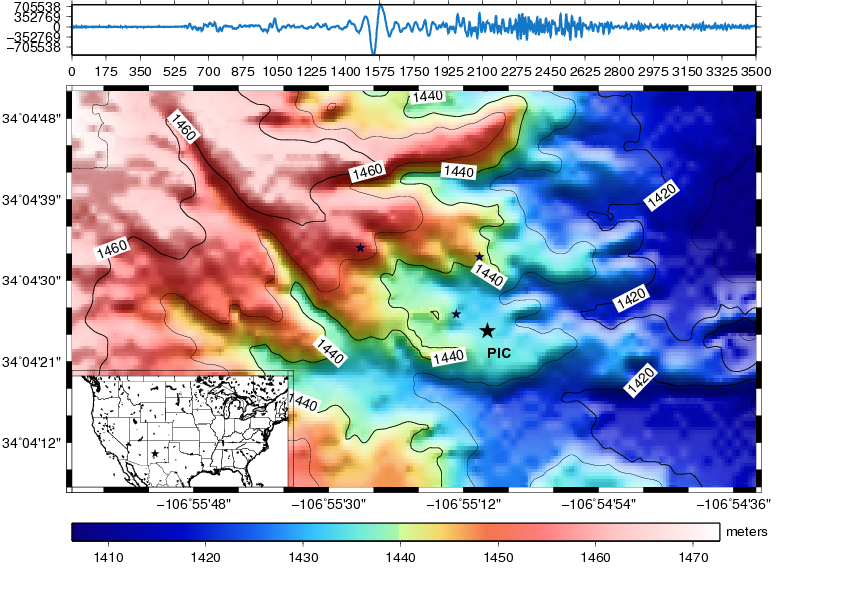
Boy, talk about a sense of accomplishment. Turns out, I really enjoy working with GMT, though. What a neat and incredibly useful tool. Tedious? Yes. A bit confusing at times? Sure. Did I mention tedious?...
It's moments like this, though, that make me smile and reassure me that this is the field I want to work in. Another great example of good moments? Literally all of the field work I have done thus far (and I'm sure all of the work still to come). Nothing makes me feel more accomplished than standing on top of a steep 80ft bluff after just having helped lug hundreds of pounds of equipment up and install a seismometer station in the midst of Devil's Club and a swamp. Glorious feeling right there (especially knowing that the climb down was going to be infinitely lighter and easier.) Or thinking that my data wasn't turning out so great because I was looking at individual stations, but then when reviewing the big picture it all works out quite nicely-- there my not be a ton of results for a particular area but when the results that ARE there actually match up, that's a pretty great feeling. I'm actually really proud of myself for coming in to this with the small amount of programming and coding experience I had and picking it up as quickly as I have. I have acheived some personal goals and already done more than I even anticipated I would be able to do by now. It's the little wins that can feel the most rewarding, honestly.
Personally, I think it's good for me to have a good ballanced amount of both very difficult and successful experiences. In fact, usually it's the challenging ones that turn out to be the most successful in the end. Those infuriating, frustrating ones are what make this all fun, anyway; they keep you on your toes and constantly learning and there's not even time to think about being bored!
All in all, even with all of the ups and downs, this summer has been a huge success so far I look forward to taking on (and overcoming, of course) many more challeges in the future.
Well, that's all I have today folks. Catch you next time.
Nealey S
On My Own
June 20th, 2015
Hi all,
It's been a pretty quiet week here in Fairbanks. I've spent most of my time in my comfortable little cubicle looking through seismograms. Thought I would show you guys a little sample of the Splitlab program I am working with:
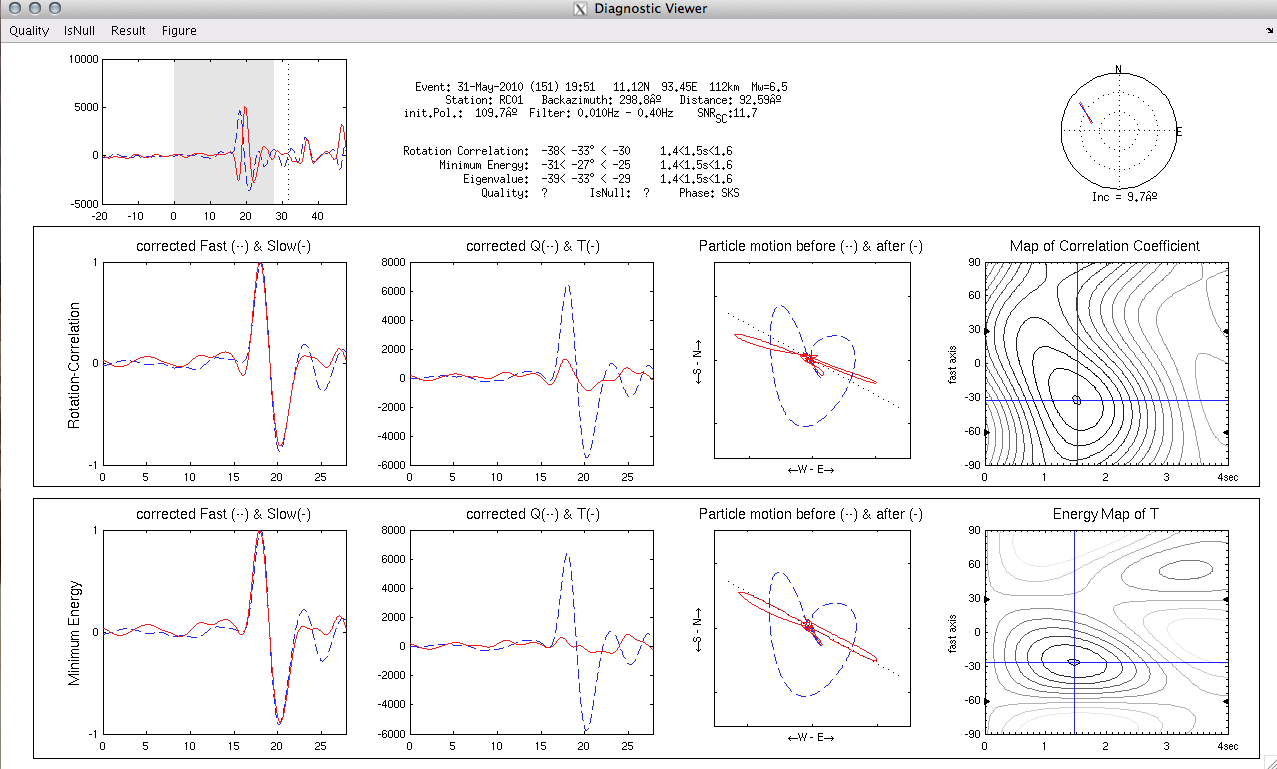
This is one of my better results from the Alaska data and I believe it exemplifies a nice preview of the Splitlab program. I think I am finally getting the hang of picking good windows for splitting, though sometimes it's not quite clear to me why some windows work better than others. I've also been experimenting with many filters, but I feel the best results often come from the least filtered data-- another thing I am trying to understand fully.
As for the title of my blog post, this week (and most of last week) my Mentor has been away at a conference and thus, I have been working pretty much solo. Of course, my mentor prepared me well before he left and has kept in contact to make sure all is going smoothly. But for the most part, I have been operating fairly indepentdently-- something I am quite used to, actually, and very much enjoy. For as long as I can remember, I have been 'stubbornly independent' as a family member once told me. I tend to keep working with something until I fully understand it on my own and I often have a hard time asking for help. (I know, I know, don't worry, I am working on that)
While living on my own isn't a new development in my life, staying here alone in a strange place incredibly far away from friends and family (and dog) has been an adjustment. Not to mention not having my own car. Talk about an attack on the independence! Relying solely on public transportation to see all I want in Alaska?? Not gonna happen. But there is hope! I made a friend who has a car- yay! He even took me to see the Alsaka pipeline:
This is one of the largest in the world and is primarily above ground. It runs from Prudhoe Bay to Valdez, Alaska. See the center part that the pipeline is sitting on? It moves! In the case of an earthquake, the part below the pipeline is not actually attached to the posts on the ground. It is fit on there so that the ground can move beneath it while the actual pipeline stays in place. How cool right?
So yeah, making friends has it's many benefits-- aside from fun company, of course-- the buses definitely don't run to this area of town. It's been great exploring on my own but I am also realizing that sometimes, it's okay (and necessary) to ask for help. Whether it's with frustrating data or just getting to the ice cream shop on the other side of town, sometimes there is just no way around it-- you gotta ask for help.
On another note, this weekend is the solstice and you know what that means in Alaska? The Midnight Sun baseball game! The Alaska Goldpanners begin their game at 10:30 p.m and the game continues straight through the hour of midnight and often lasts as late as 2 a.m. Never has artificial lighting been used because the sun barely sinks below the horizon. I have been offered the chance to see it and though baseball isn't really my sport, what a fun experience this will be! I'll be sure to take a photo or two to share with you guys, of course.
Well, I'll leave you all with that.
Have a great week, everybody!
Nealey S
Getting the Hang of it and Expanding Horizons
June 9th, 2015
Hi all,
Well, it's week two of the internship and things appear to be going relatively smoothly. I've gotten the hang of public bus transportation and even visited a museum this weekend. I have decided that I am a big fan of Alaskan native art. Also Puffins-- I may have found a new favorite bird (not that I really contemplated birds enough before this to actually have an old favorite, but still).
As far as my research project is concerned, I am working with data from a project called PLUTONS. This data was collected by broadband seismometers (Guralp 3T) my mentor deployed around Uturuncu volcano in Bolivia between the years of 2010 and 2012. I am working with basically raw data that I am picking SKS waves from, one siesmogram at a time. I am also one of the first to look at this data in extenso.
Working with the Uturuncu data has its ups and downs, though. I have experienced difficulty in actually finding many suitable SKS waves needed for splitting. I have not gone through all of the stations yet, though, and even the lack of such waves can tell me something about the subsurface (it is known that there is a magma body underneath the volcano so this could be a reason for a possible lack of s-waves).
But the summer is still young!
I will also be looking at some data from previous stations set up around Alaska, particularly in the areas near where our new stations will be installed this summer. This is data that has not been extensively examined by anyone and so I may actually work on it also as a preliminary study to our current project, SALMON. This Alaska data set is sure to have plenty of shear wave splitting and will thus give me even more information to put into an abstract by the end of the summer.
I will be using a variety of tools this summer. First and foremost, I mainly work in Splitlab (through Matlab) and SAC. I think I'm finally getting the hang of these two, especially Splitlab; my mentor is fairly new to this particular program as well so some parts have been a bit trial and error, but I think things are smoothing out well now. I use Antelope sparingly, but only for viewing one or two things in my data set. I don't foresee using it in abundance throughout the semester. Later as I have processed more data, I will use GMT a bit more for map-making and such, but as of right now I have not started that.
So, that's pretty much where I am at right now. Hopefully by the next post, I will have some good results starting to accumulate. Until then, thanks for reading!
Also, Geology still rocks,
NealeyS
Alaska, the Last Frontier
June 5th, 2015
Hi all!
I have just spent my first week in Fairbanks. The weather is wonderful and despite what I've heard, not a mosquito in site! (To be fair, I have been mostly on campus and according to many people up here, they don't get so bad around all these buildings. Thank goodness.) My dorm room is also nice and cozy, though getting used to a public shower/bathroom for an entire summer will be an experience. In other news, I also rode my very first public bus. I like to walk everywhere (everywhere is in walking ditance if you have the time) but I realize this is not always possible in a city environment (though, as far as I can tell, I've not been in the 'city' part of Fairbanks, yet).
What fun experiences! I hope to do somemore exploring/hiking this weekend and at the very least walk the campus trails.
Now regarding the reason I am here: research!
I have already learned so much in the short time I've been here. We are using a program in Matlab called Splitlab and it's actually pretty neat and not as intimidating as I thought Matlab was (I am incredibly new to coding, Matlab, anything of that sort really). There is hope, though! Something I found very useful for understanding the program was reading scientific papers and articles on shear wave splitting. I highly encourage doing a little extra reading on whatever your project subject. Maybe even read a paper that discusses the program you are using in more detail. I now feel even more comfortable discussing this research because I know the background.
As far as goals go, I have a bit of a shorter time to work on the Uturuncu data than anticipated. I hope to have all of the seismograms analyzed and the shear waves present in them picked by the first third of the summer. 34 stations worth of data-- not too bad right?
By the end of June (or second third of the summer) I hope to have the data interpretted, that is, go ahead and start making some conclusions about the shear wave splitting that I've observed and getting the information into abstract form. I plan to totally be a master at using Splitlab at this time. (Aim high, right?)
Finally, the last third of the summer will be primarily dedicatd to fieldwork. I will be traveling to many new places in Alaska, including Mt. Redoubt volcano, and helping set up 19 more seismometer stations. I would like, by the end of the summer, to have the knowledge to set up my own stations and gain a better understaning of the work and time that goes into not just analyzing data from stations, but also getting them deployed and knowing where to deploy them. ( Before orientation, I had already spent a week in the Anchorage and Cook Inlet area deploying seismometers and let me tell you: It's hard work!)
These are my goals and I know with the awesome mentor I have here at Fairbanks, Dr. Doug Christensen, I will accomplish them.
Thanks for reading! (A bit lengthy, I know. You deserve a gold star for getting this far)
And remember...
Gelogy rocks!
NealeyS
In the beginning…
May 28th, 2015
Today we learned how to edit the blogs. YAY! So here goes entry #1:
This is Day 5 of orientation week and what a fun week it has been! I have already learned so much this week and I think all of the other interns are just grand. Also, Michael, Rob, and Matt-- you guys are pretty fantastic as well!
I am super stoked to continue my internship in Alaska this summer. I don't know all of the details right now but I do know I will get to help set up more seismometer stations around Alaska and that is exciting work!
Geology Rocks!
~Nealey S




